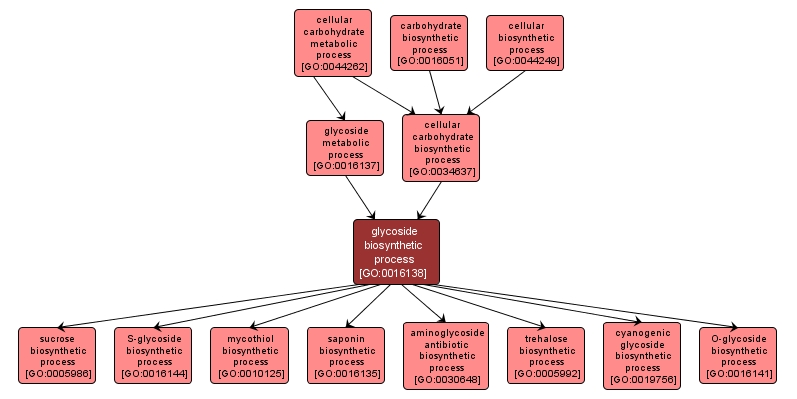GO TERM SUMMARY
|
| Name: |
glycoside biosynthetic process |
| Acc: |
GO:0016138 |
| Aspect: |
Biological Process |
| Desc: |
The chemical reactions and pathways resulting in the formation of glycosides, compounds in which a glycosyl group is substituted into a hydroxyl, thiol or selenol group in another compound. |
Synonyms:
- glycoside synthesis
- glycoside biosynthesis
- glycoside formation
- glycoside anabolism
|
|

|
INTERACTIVE GO GRAPH
|














